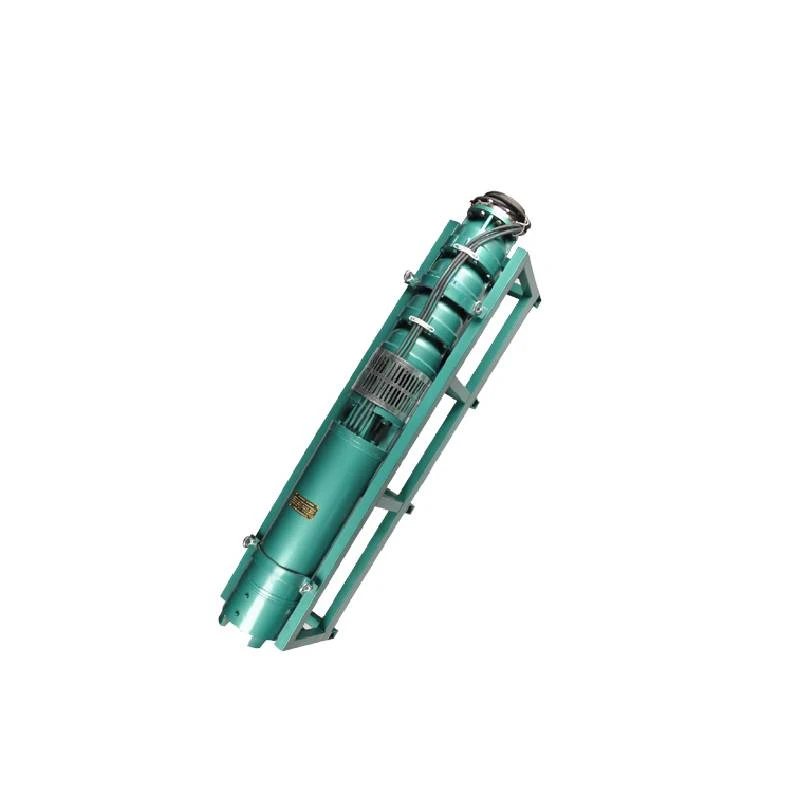Nov . 16, 2024 12:58 Back to list
Deep Sea Submersible Pump for Efficient Water Extraction and Management Solutions
Exploring Deep Water Submersible Pumps Applications and Technology
Deep water submersible pumps (DWSP) play a crucial role in various industries by efficiently extracting fluids from great depths. These specialized pumps are submerged underwater and are designed to operate in challenging environments, making them indispensable in sectors such as oil and gas, wastewater management, mining, and irrigation.
Understanding Deep Water Submersible Pumps
At their core, deep water submersible pumps consist of a motor and pump body that are designed to work together to lift large volumes of fluid from significant depths, often exceeding hundreds or even thousands of feet. Unlike traditional pumps that require a set of pipes to draw fluid from the surface, submersible pumps operate beneath the water, reducing the chances of erosion, cavitation, and other complications associated with surface pumps.
Key Design Features
The design of a deep water submersible pump is critical for its functionality and efficiency
. Typically, these pumps feature a multi-stage impeller system that allows them to generate high pressure and flow rates necessary for moving fluids from considerable depths. Advanced materials, such as stainless steel or high-grade polymers, are used to withstand the corrosive effects of certain fluids and the harsh underwater environment.Moreover, the motors used in these pumps are hermetically sealed to protect them from water ingress. This design not only increases the longevity of the pump but also ensures its consistent performance in challenging conditions.
deep water submersible pump

Applications Across Industries
Deep water submersible pumps find extensive use across various industries. In the oil and gas sector, they are instrumental in extracting crude oil from offshore drilling sites, where depths can reach several thousand feet. The efficiency and reliability of these pumps can lead to significant cost savings and increased production rates.
In wastewater management, DWSPs are employed to remove sewage and stormwater from underground systems. Their ability to operate under high pressure allows for effective transport of waste materials to treatment facilities without clogging issues.
Additionally, in mining operations, deep water submersible pumps aid in dewatering activities, ensuring that operational sites are clear of excess water that could hinder mining processes. In agricultural applications, these pumps are used for irrigation and drainage, providing reliable access to groundwater resources.
Future Innovations
As technology continues to evolve, advancements in sensor technology, remote monitoring, and automation are set to enhance the capabilities of deep water submersible pumps. These innovations will likely lead to more efficient operation, lower energy consumption, and improved maintenance practices, ultimately reducing operational costs for industries that rely on this equipment.
In conclusion, deep water submersible pumps are vital components in numerous industries, providing essential services for fluid extraction and management. As technology advances, the future holds promise for even more efficient and reliable solutions that meet the ever-growing demands of modern applications. As such, investing in these pumps and the accompanying technology will be crucial for businesses looking to remain competitive in an increasingly resource-driven economy.
-
Submersible Water Pump: The Efficient 'Power Pioneer' of the Underwater World
NewsJul.01,2025
-
Submersible Pond Pump: The Hidden Guardian of Water Landscape Ecology
NewsJul.01,2025
-
Stainless Well Pump: A Reliable and Durable Pumping Main Force
NewsJul.01,2025
-
Stainless Steel Submersible Pump: An Efficient and Versatile Tool for Underwater Operations
NewsJul.01,2025
-
Deep Well Submersible Pump: An Efficient 'Sucker' of Groundwater Sources
NewsJul.01,2025
-
Deep Water Well Pump: An Efficient 'Sucker' of Groundwater Sources
NewsJul.01,2025
-
 Submersible Water Pump: The Efficient 'Power Pioneer' of the Underwater WorldIn the field of hydraulic equipment, the Submersible Water Pump has become the core equipment for underwater operations and water resource transportation due to its unique design and excellent performance.Detail
Submersible Water Pump: The Efficient 'Power Pioneer' of the Underwater WorldIn the field of hydraulic equipment, the Submersible Water Pump has become the core equipment for underwater operations and water resource transportation due to its unique design and excellent performance.Detail -
 Submersible Pond Pump: The Hidden Guardian of Water Landscape EcologyIn courtyard landscapes, ecological ponds, and even small-scale water conservancy projects, there is a silent yet indispensable equipment - the Submersible Pond Pump.Detail
Submersible Pond Pump: The Hidden Guardian of Water Landscape EcologyIn courtyard landscapes, ecological ponds, and even small-scale water conservancy projects, there is a silent yet indispensable equipment - the Submersible Pond Pump.Detail -
 Stainless Well Pump: A Reliable and Durable Pumping Main ForceIn the field of water resource transportation, Stainless Well Pump has become the core equipment for various pumping scenarios with its excellent performance and reliable quality.Detail
Stainless Well Pump: A Reliable and Durable Pumping Main ForceIn the field of water resource transportation, Stainless Well Pump has become the core equipment for various pumping scenarios with its excellent performance and reliable quality.Detail
